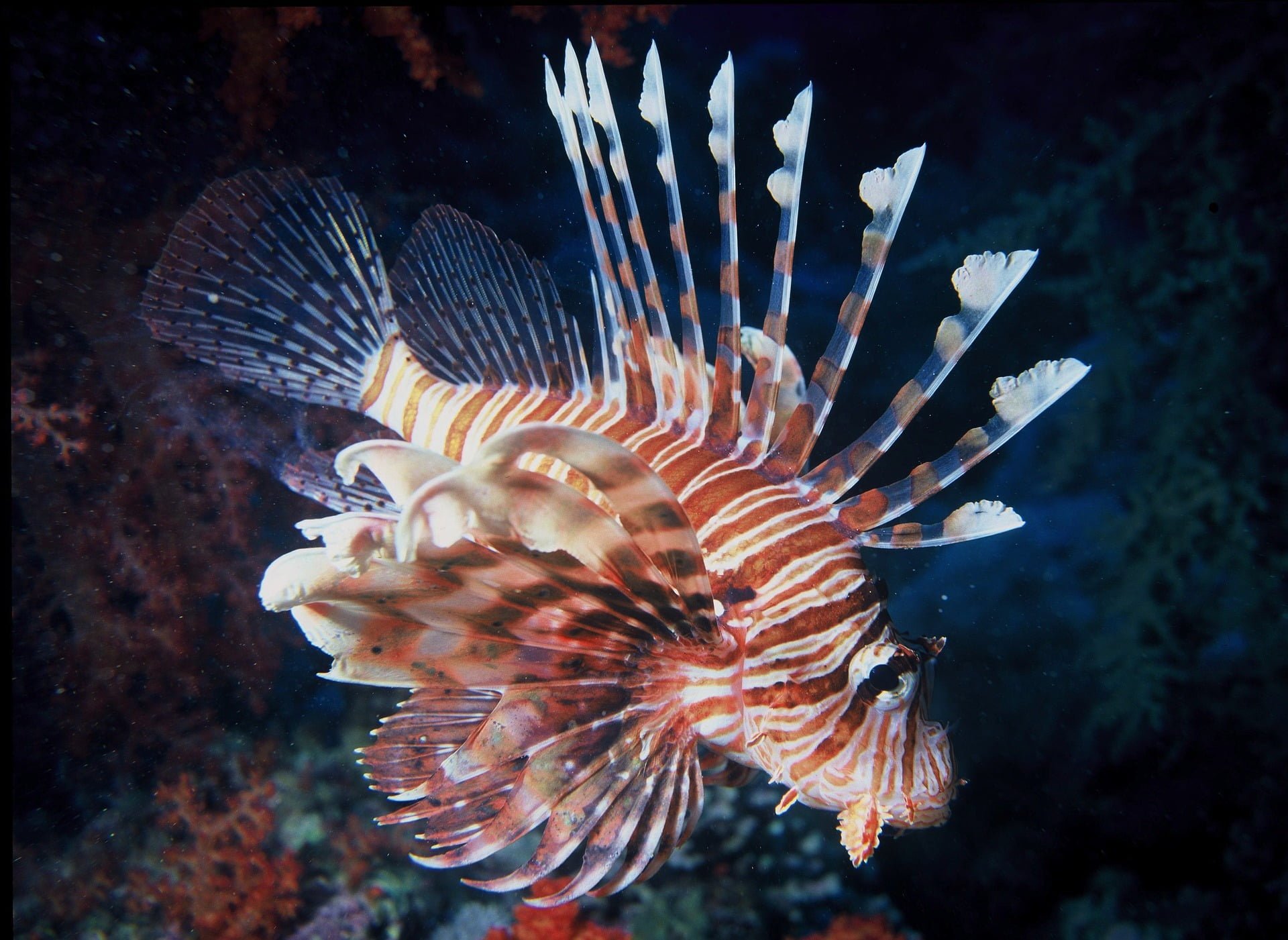Fu Manchu lionfish ? or do you know a fish called lionfish? It looks pretty flashy, and many of you know it as a kind of fish that is also popular in aquariums. Although it is such a lionfish, as the name suggests, it is also a member of the lionfish, and it is a fish species that is often seen in fishing.
Lionfish live mainly in Japan, Asia, and Oceania and prefer a hot climate. As I will explain later, this fish is poisonous and is also known as a dangerous fish. This time, I would like to touch on cooking, etc., including fish and handling lionfish.
Introducing four species of lionfish!
Even though it is a lionfish, it has been confirmed that at least four kinds of fish members of the lionfish family inhabit Japan.
Everything has its characteristics and can be distinguished by looking at it in detail, but you cannot tell which is which if you do not know it. Therefore, I would like to touch on the characteristics so that each lionfish can be distinguished.
Lionfish
Let’s start with the normal lionfish. Think of it as the center of all lionfish companions for comparison. In Japan, it lives in a hot area south of Hokkaido.
A notable feature is the shape of the tail fin. Compared to other lionfish, it has a transparent tail fin that is not flashy. However, there is a notch in the fin when you are a young fish, so you should be careful.
Fu Manchu Lionfish
Fu Manchu Lionfish, often referred to as the Twinspot Lionfish or Ocellated Lionfish is covered in vertical red, white, and black stripes. It possesses tall, quill-like dorsal fins and broad, fan-shaped pectoral fins. The two, feeler-like appendages on the chin set it apart from other Lionfish.

Red lionfish
Next is the red lionfish. This is also one of the well-known types of lionfish, just like regular lionfish. It can be seen that the habitat inhabits the waters further south compared to the lionfish. It seems that many habitats have been confirmed in tropical regions where there are many coral reefs.
Compared to the lionfish, you can see that the tail fin has a speckled pattern, and the design is very different. Also, the number of soft pectoral fins is 14 to 15, which is 2 to 3 more than that of lionfish, which is one of the features that make it easy to distinguish.
Nettaimino
Next, I would like to talk about Nettaimino. Also known as the spotfin lionfish. As the name suggests, it is a type of lionfish that inhabits the tropics, including the southern part of Japan, and has been confirmed to inhabit the Indian Ocean.
The first distinguishing feature is the size. One of the features is that it is a little small, as it can only be up to 20 cm. Also, the big distinguishing points are the speckled pattern on the pectoral fin and the striped flap on the head.
Kirinmino
The last one I would like to introduce is Kirin Mino. It is also called a giraffe lionfish. It has been confirmed to live in warm tropical regions, including the South Sea of Japan. It seems that it also inhibits the Red Sea and Africa.
To distinguish, it is even smaller than Nettaimino and grows up to 18 cm. One of the essential distinguishing points is the large, widened pectoral fin. Compared to other lionfish companions, there are no cuts. At first glance, other than the pattern, it feels like a scorpionfish.
Learn how to choose bait by fishing for scorpion fish! ??
Then, what is the best bait to try to catch lionfish? When aiming for average scorpionfish, it can be used for a wide range of purposes, such as insect food, krill, squid fillet, saury fillet, and silver-stripe round herring.
The same is true for lionfish. It eats anything relatively, so it often happens when aiming for scorpionfish.
What if you want to specialize in lionfish?
In the life of lionfish, the main foods they eat are small fish and shrimp. Therefore, it is highly recommended to aim with live shrimp, krill, fish fillets, silver-stripe round herring, etc., rather than insect food.
I have the impression that it has an exceptionally high track record in krill. Depending on the situation and environment, it will change, so it may be an excellent way to capture with bait that can easily lead to fishing results by preparing a few options centered on krill.
Fish with colorful patterns are prevalent! ??
As I mentioned earlier, Lionfish are also fish that are bred in many aquariums. Its colorful body is famous, and it is also a fish that sells many goods.
It is also popular with children, and goods such as stuffed animals are also gaining popularity. The appearance that looks good on SNS may be becoming more popular because of the recent fashion.
Learn how to handle lionfish!
First of all, I will explain it in sentences. Let’s remove the dorsal fin, which can be a nuisance. It is this sizeable dorsal fin stinger that is most likely to stick. Remove it first so that it does not stick to the bottom. If you’ve seen devil stingers without dorsal fins sold at supermarkets, it might be easier to imagine.
You can easily remove it by making a notch and cutting the base of the excellent bridge on the dorsal fin, just as you would fillet. After that, like other fish, if you cut it into three pieces, it is completed as a unique way of handling lionfish. In doing this, please remember that the tail and abdomen base are also poisonous.
